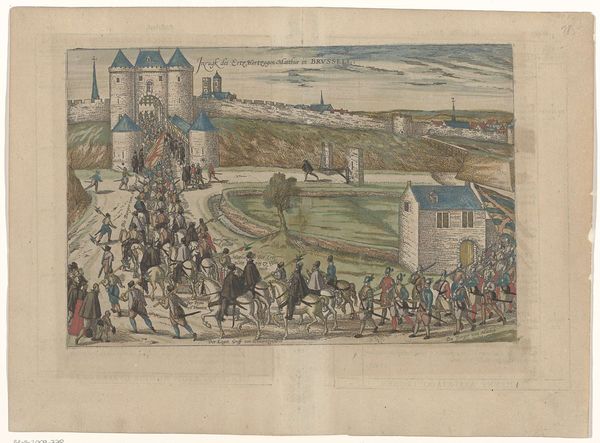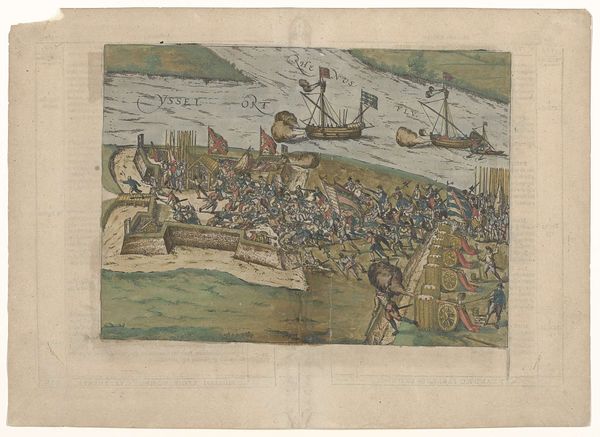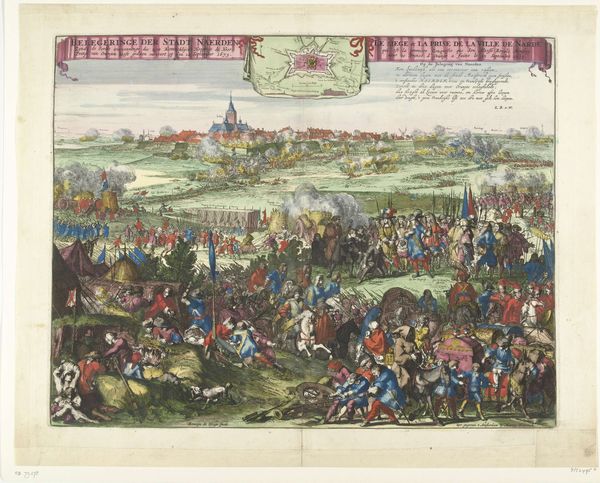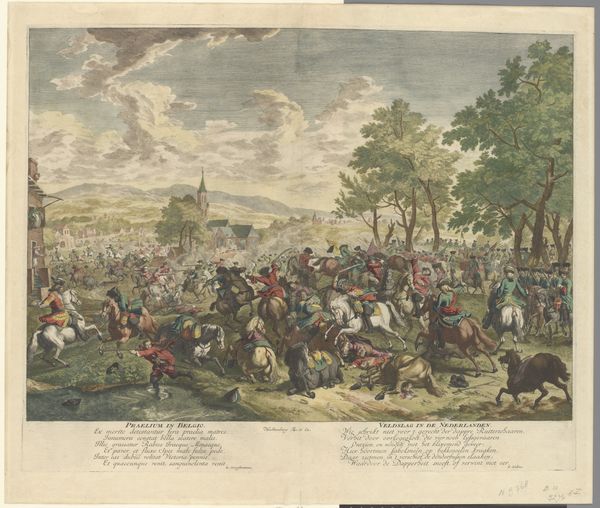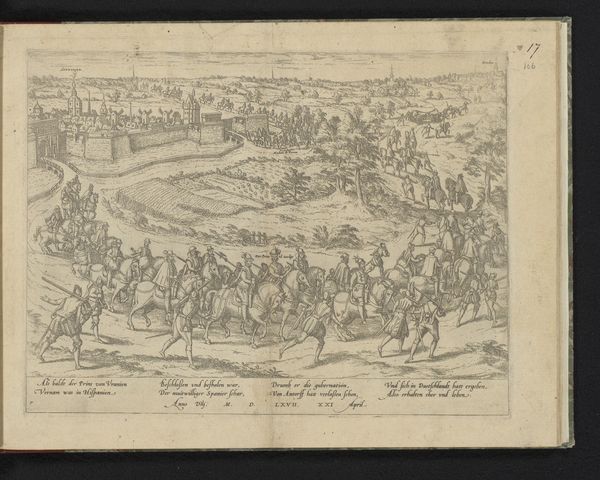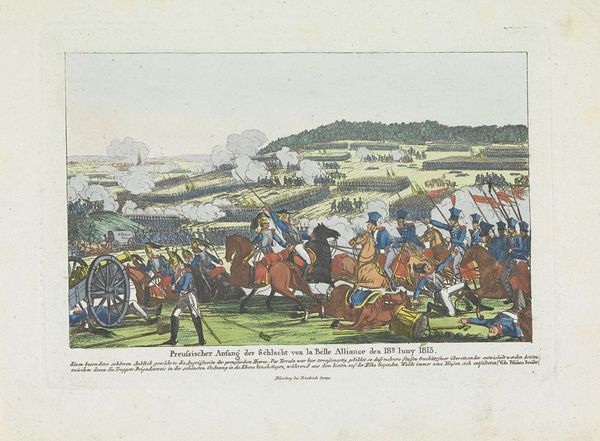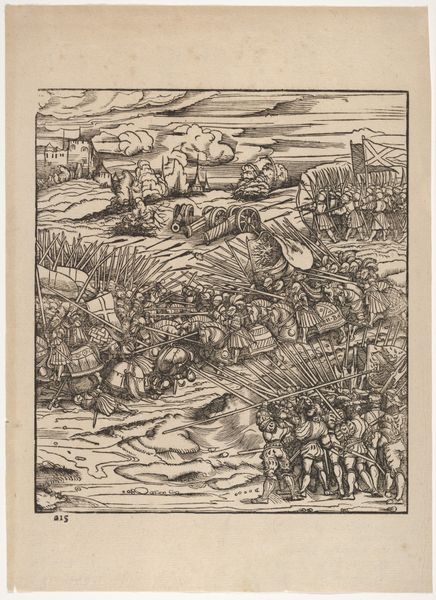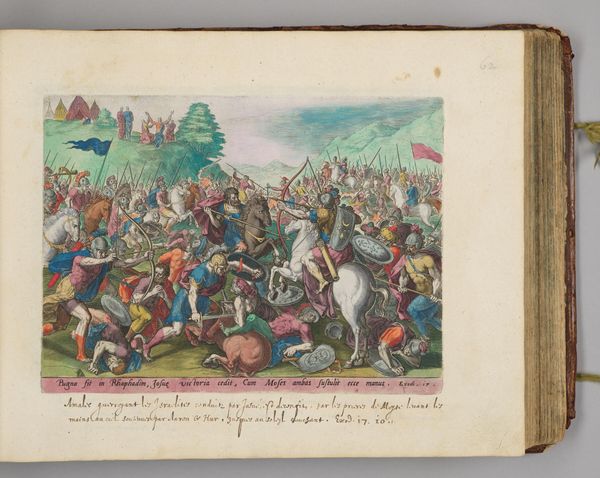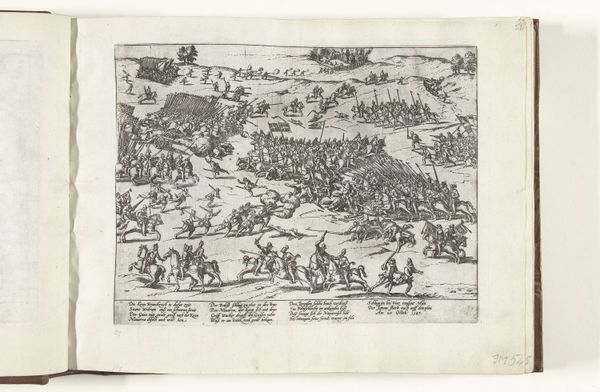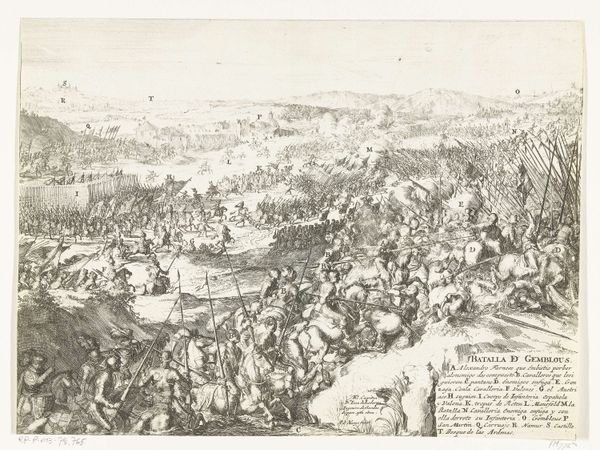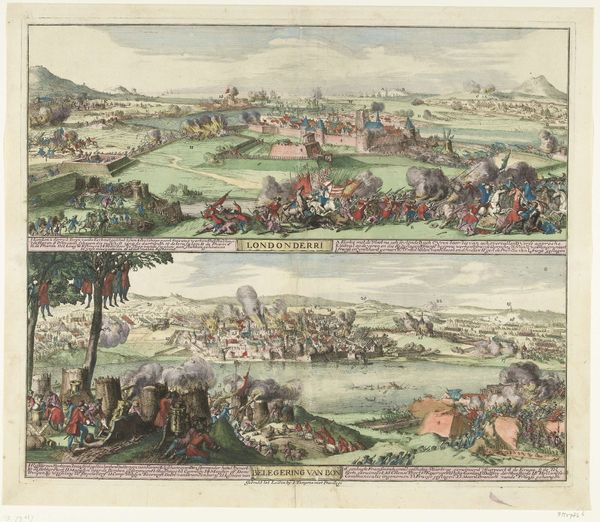
print, etching, engraving
#
medieval
# print
#
etching
#
landscape
#
figuration
#
genre-painting
#
history-painting
#
northern-renaissance
#
engraving
Dimensions: height 267 mm, width 361 mm
Copyright: Rijks Museum: Open Domain
Editor: Here we have Frans Hogenberg's "Slag bij Gembloers, 1578," an engraving and etching printed in 1588. It's incredibly detailed and seems to capture so much movement. It feels overwhelming, almost chaotic. What do you see in this piece? Curator: The chaos, as you put it, is central. Consider the Dutch Revolt as the backdrop. Hogenberg wasn't just depicting a battle, but a turning point in a larger struggle for self-determination. What stories of resistance and oppression might be embedded within the lines of this print? Editor: So, the figures aren’t just soldiers; they represent larger political forces at play? Curator: Exactly. Look at the landscape – how does it frame or even participate in the conflict? The Northern Renaissance style often used landscapes to mirror social and political orders. Does the setting amplify the feeling of turmoil? Who controlled the land, who had access to it, and what did it represent? Editor: It's a good point, you're right. I’m used to focusing on individual figures, I see now that examining the historical context changes everything. Curator: Indeed. Art is rarely created in a vacuum. Hogenberg, through his print, invites us to question not just who won the battle, but what the very act of battling signifies within this historical power dynamic. This challenges us to see history from multiple perspectives. Who were the marginalized in this conflict, and how were their voices suppressed, both on and off the battlefield? Editor: That's fascinating. Thinking about it this way makes the piece feel relevant, not just like a historical record. I see that his choices, like using print, were part of spreading awareness, becoming a political statement themselves. Curator: Precisely. And what do we, as viewers centuries later, do with that statement? How do we use it to challenge contemporary forms of oppression and amplify marginalized voices today? Editor: I hadn’t thought about that! Thank you for opening my eyes to the artwork's potential to have meaning today.
Comments
No comments
Be the first to comment and join the conversation on the ultimate creative platform.

